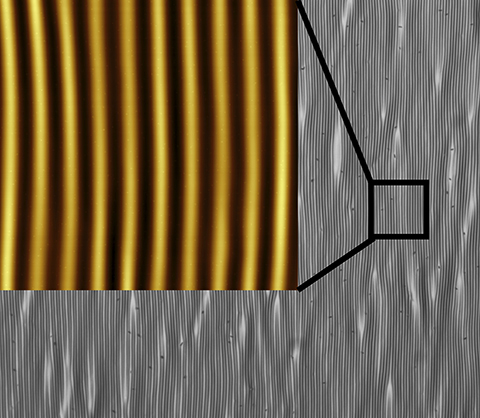https://doi.org/10.1140/epje/i2020-11946-y
Regular Article
The emergence of local wrinkling or global buckling in thin freestanding bilayer films
1
Department of Physics & Astronomy, McMaster University, L8S 4M1, Hamilton, Ontario, Canada
2
School of Physics and Astronomy, University of Nottingham, University Park, NG7 2RD, Nottingham, UK
3
UMR CNRS Gulliver 7083, ESPCI Paris, PSL Research University, 10 rue Vauquelin, 75005, Paris, France
* e-mail: dalnoki@mcmaster.ca
Received:
19
October
2019
Accepted:
31
March
2020
Published online:
21
April
2020
Periodic wrinkling of a rigid capping layer on a deformable substrate provides a useful method for templating surface topography for a variety of novel applications. Many experiments have studied wrinkle formation during the compression of a rigid film on a relatively soft pre-strained elastic substrate, and most have focused on the regime where the substrate thickness can be considered semi-infinite relative to that of the film. As the relative thickness of the substrate is decreased, the bending stiffness of the film dominates, causing the bilayer to transition to either local wrinkling or a global buckling instability. In this work optical microscopy was used to study the critical parameters that determine the emergence of local wrinkling or global buckling of freestanding bilayer films consisting of a thin rigid polymer capping layer on a pre-strained elastomeric substrate. The thickness ratio of the film and substrate as well as the pre-strain were controlled and used to create a buckling phase diagram which describes the behaviour of the system as the ratio of the thickness of the substrate is decreased. A simple force balance model was developed to understand the thickness and strain dependences of the wrinkling and buckling modes, with excellent quantitative agreement being obtained with experiments using only independently measured material parameters.
Key words: Soft Matter: Interfacial Phenomena and Nanostructured Surfaces
© EDP Sciences, Società Italiana di Fisica and Springer-Verlag GmbH Germany, part of Springer Nature, 2020





